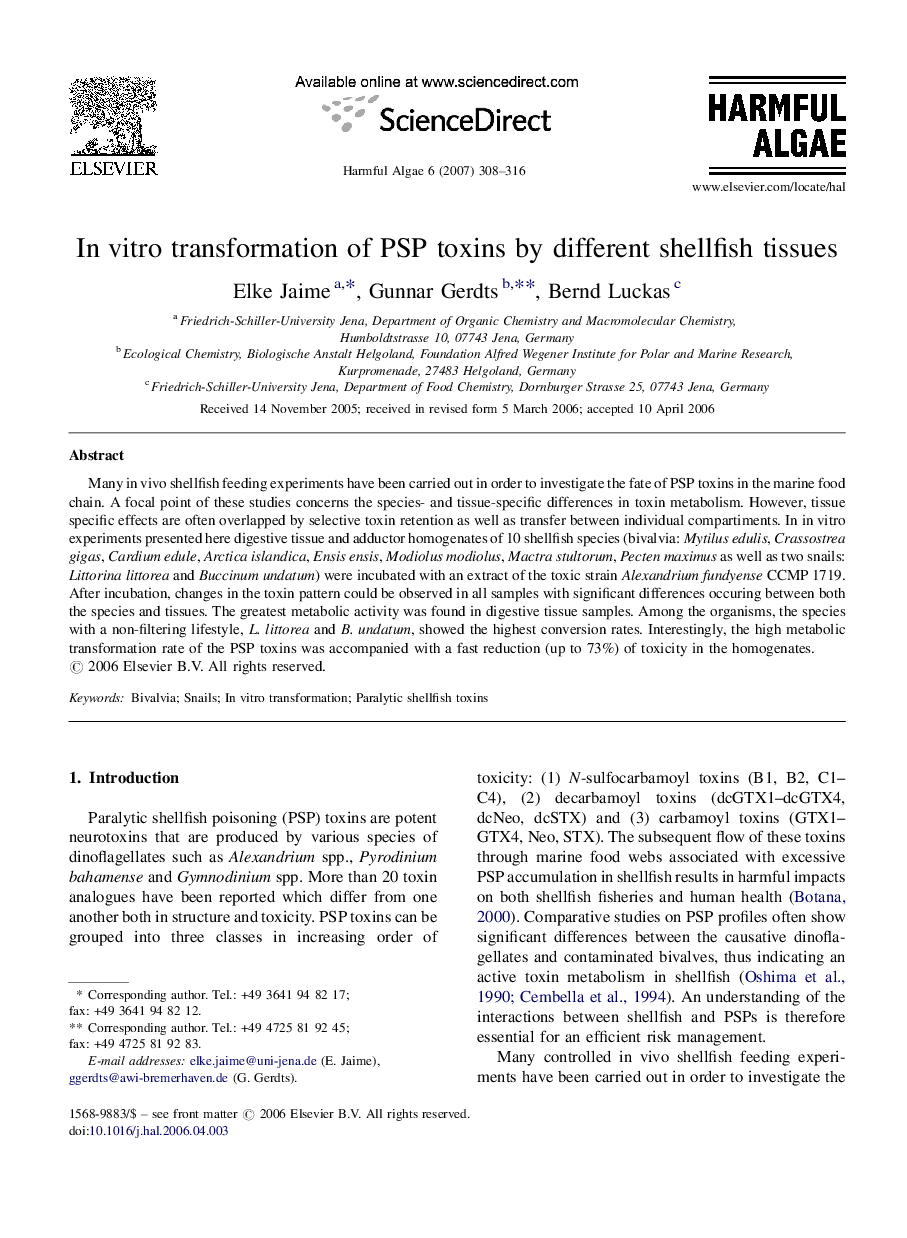| Article ID | Journal | Published Year | Pages | File Type |
|---|---|---|---|---|
| 4546068 | Harmful Algae | 2007 | 9 Pages |
Many in vivo shellfish feeding experiments have been carried out in order to investigate the fate of PSP toxins in the marine food chain. A focal point of these studies concerns the species- and tissue-specific differences in toxin metabolism. However, tissue specific effects are often overlapped by selective toxin retention as well as transfer between individual compartiments. In in vitro experiments presented here digestive tissue and adductor homogenates of 10 shellfish species (bivalvia: Mytilus edulis, Crassostrea gigas, Cardium edule, Arctica islandica, Ensis ensis, Modiolus modiolus, Mactra stultorum, Pecten maximus as well as two snails: Littorina littorea and Buccinum undatum) were incubated with an extract of the toxic strain Alexandrium fundyense CCMP 1719. After incubation, changes in the toxin pattern could be observed in all samples with significant differences occuring between both the species and tissues. The greatest metabolic activity was found in digestive tissue samples. Among the organisms, the species with a non-filtering lifestyle, L. littorea and B. undatum, showed the highest conversion rates. Interestingly, the high metabolic transformation rate of the PSP toxins was accompanied with a fast reduction (up to 73%) of toxicity in the homogenates.
